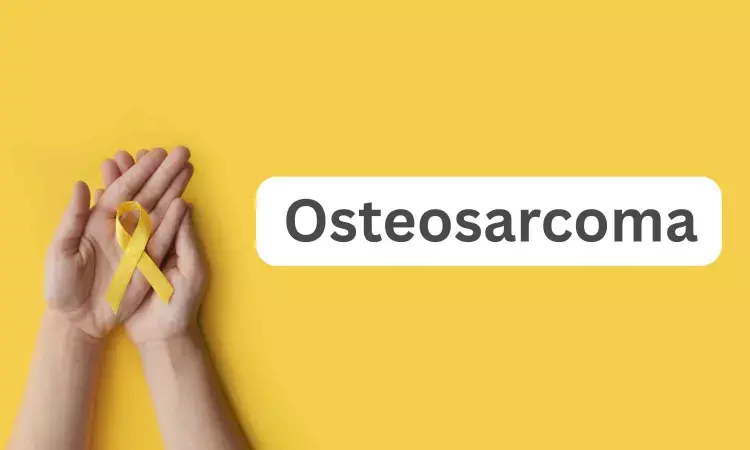- Home
- Medical news & Guidelines
- Anesthesiology
- Cardiology and CTVS
- Critical Care
- Dentistry
- Dermatology
- Diabetes and Endocrinology
- ENT
- Gastroenterology
- Medicine
- Nephrology
- Neurology
- Obstretics-Gynaecology
- Oncology
- Ophthalmology
- Orthopaedics
- Pediatrics-Neonatology
- Psychiatry
- Pulmonology
- Radiology
- Surgery
- Urology
- Laboratory Medicine
- Diet
- Nursing
- Paramedical
- Physiotherapy
- Health news
- Fact Check
- Bone Health Fact Check
- Brain Health Fact Check
- Cancer Related Fact Check
- Child Care Fact Check
- Dental and oral health fact check
- Diabetes and metabolic health fact check
- Diet and Nutrition Fact Check
- Eye and ENT Care Fact Check
- Fitness fact check
- Gut health fact check
- Heart health fact check
- Kidney health fact check
- Medical education fact check
- Men's health fact check
- Respiratory fact check
- Skin and hair care fact check
- Vaccine and Immunization fact check
- Women's health fact check
- AYUSH
- State News
- Andaman and Nicobar Islands
- Andhra Pradesh
- Arunachal Pradesh
- Assam
- Bihar
- Chandigarh
- Chattisgarh
- Dadra and Nagar Haveli
- Daman and Diu
- Delhi
- Goa
- Gujarat
- Haryana
- Himachal Pradesh
- Jammu & Kashmir
- Jharkhand
- Karnataka
- Kerala
- Ladakh
- Lakshadweep
- Madhya Pradesh
- Maharashtra
- Manipur
- Meghalaya
- Mizoram
- Nagaland
- Odisha
- Puducherry
- Punjab
- Rajasthan
- Sikkim
- Tamil Nadu
- Telangana
- Tripura
- Uttar Pradesh
- Uttrakhand
- West Bengal
- Medical Education
- Industry
Nrf2 identified as a key driver of treatment resistance in osteosarcoma: Study

A deeper understanding of osteosarcoma, the most common primary malignant bone tumor affecting children and adolescents, is reshaping strategies for overcoming treatment resistance.
Central to this breakthrough is Nuclear factor E2-related factor 2 (Nrf2), a transcription factor now recognized as a pivotal player in chemoradiotherapy resistance. Traditionally acknowledged for its role in antioxidant defense and maintaining cellular homeostasis, Nrf2 emerges in recent insights as a double-edged molecule, offering protection in normal tissues but serving as a survival mechanism in malignant cells.
The overactivation of Nrf2 in cancer cells enables them to withstand oxidative stress, enhance DNA repair, evade apoptosis, and reduce intracellular drug concentration. These effects are achieved through the activation of the antioxidant response element (ARE), which upregulates enzymes involved in detoxification and drug efflux. As a result, osteosarcoma cells equipped with elevated Nrf2 expression exhibit multi-drug resistance, undermining the effectiveness of chemotherapeutic agents such as cisplatin, doxorubicin, and methotrexate.
Beyond drug resistance, Nrf2 contributes to radiotherapy resistance by mitigating the damage induced by reactive oxygen species and facilitating DNA double-strand break repair. Its interaction with pathways such as Keap1-Nrf2-ARE, PI3K/AKT, and autophagy networks highlights its extensive involvement in orchestrating cellular responses that defend tumor survival. The crosstalk between Nrf2 and regulated cell death mechanisms, including ferroptosis and autophagy, further underscores its centrality in osteosarcoma progression.
Notably, Nrf2 also supports tumor proliferation and metastasis by driving metabolic reprogramming and enabling epithelial-to-mesenchymal transition. Its elevated expression in osteosarcoma correlates negatively with patient survival, affirming its oncogenic potential. While therapeutic inhibition of Nrf2 remains challenging due to its protective role in normal tissues, preclinical approaches using agents like ML385 and natural compounds such as oridonin have shown promise in reversing resistance and reducing tumor burden.
This exploration into Nrf2’s multifaceted role marks a significant advancement in the quest to overcome treatment resistance in osteosarcoma. As research continues to unravel its regulatory mechanisms, Nrf2 is being spotlighted as a potential therapeutic target that could revolutionize future interventions for aggressive pediatric bone cancers.
Reference:
Xianglin Peng, Jing Feng, Han Yang, Ping Xia, Feifei Pu, Nrf2: A key regulator in chemoradiotherapy resistance of osteosarcoma, Genes & Diseases,https://doi.org/10.1016/j.gendis.2024.101335.
Dr Kamal Kant Kohli-MBBS, DTCD- a chest specialist with more than 30 years of practice and a flair for writing clinical articles, Dr Kamal Kant Kohli joined Medical Dialogues as a Chief Editor of Medical News. Besides writing articles, as an editor, he proofreads and verifies all the medical content published on Medical Dialogues including those coming from journals, studies,medical conferences,guidelines etc. Email: drkohli@medicaldialogues.in. Contact no. 011-43720751


